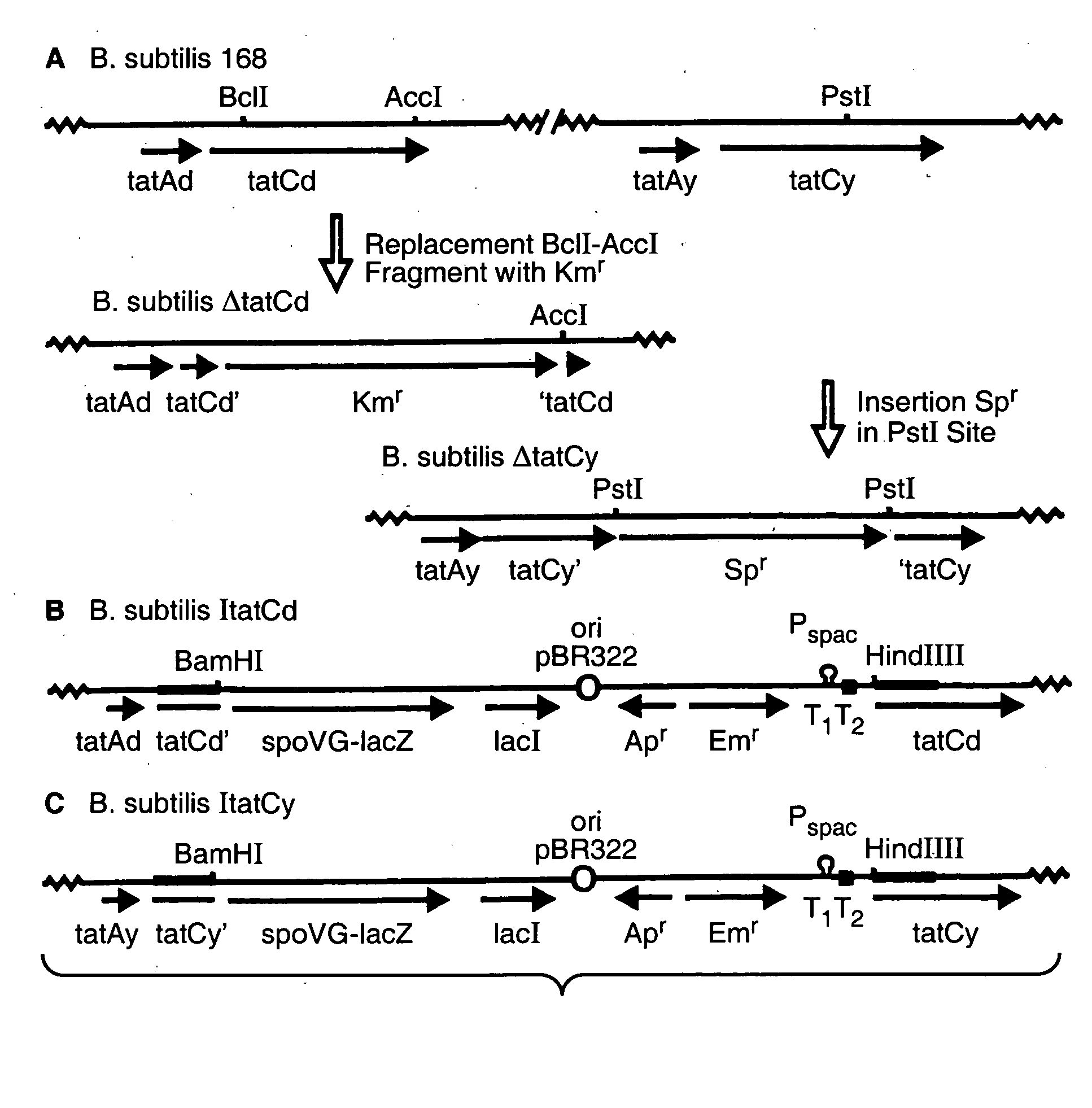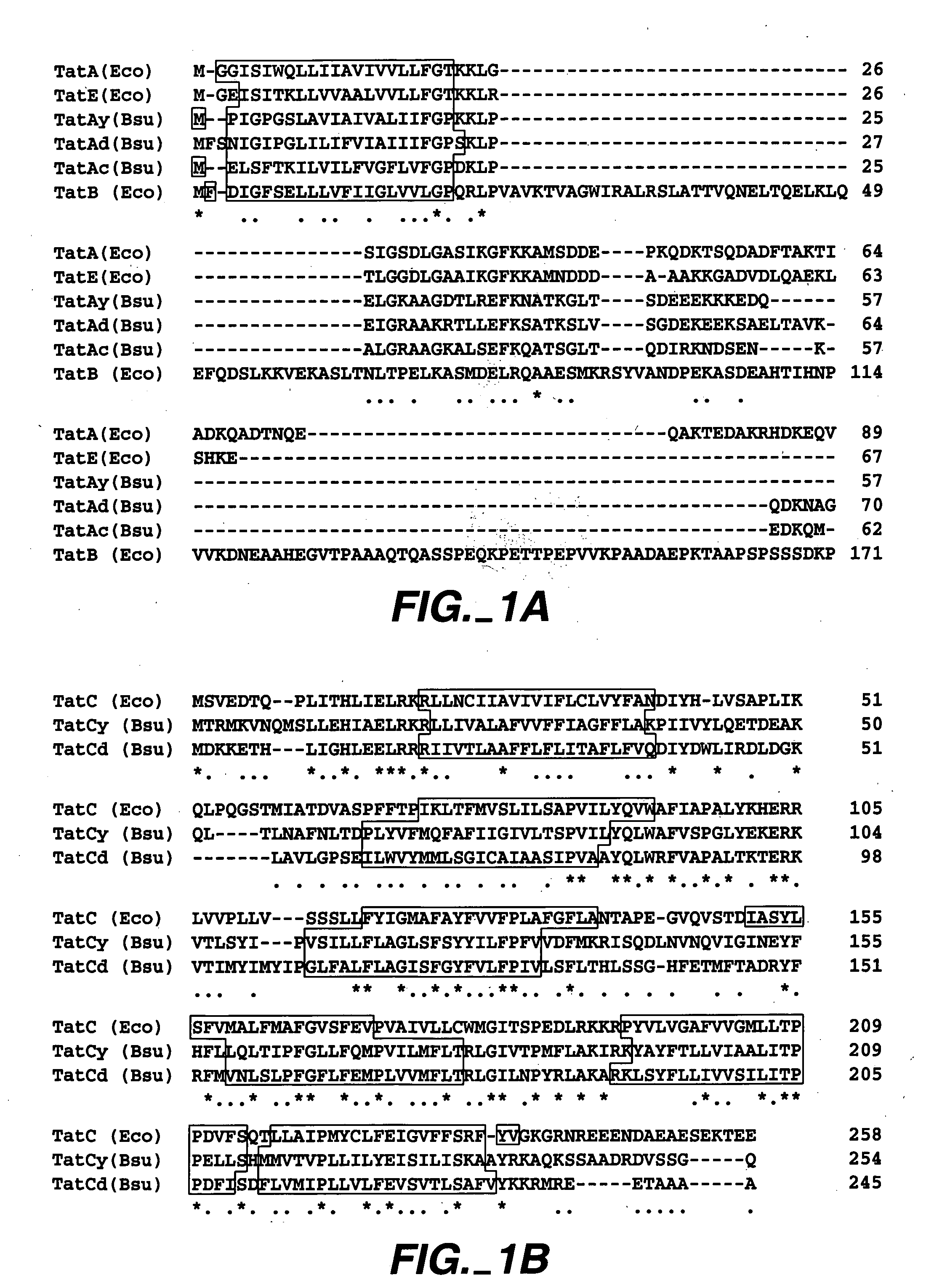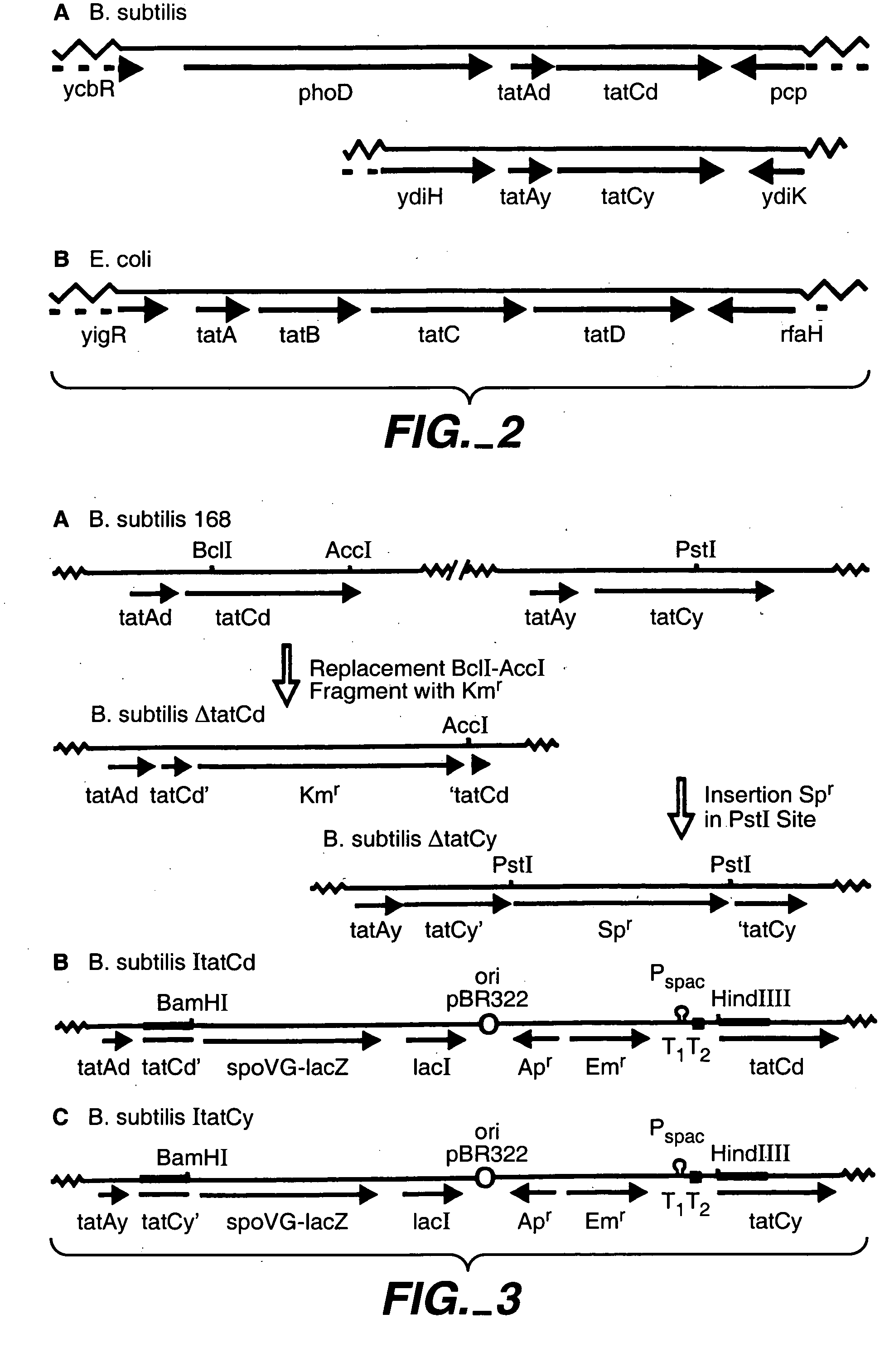Twin-arginine translocation in Bacillus
a technology of arginine and bacillus, which is applied in the field of host cell expression of proteins, can solve the problems of inefficient translocation, poor targeting, and inefficient secretion of recombinant proteins by i>bacillus /i>species, and achieves the enhancement of the secretion machinery, and increasing the secretion of proteins
- Summary
- Abstract
- Description
- Claims
- Application Information
AI Technical Summary
Benefits of technology
Problems solved by technology
Method used
Image
Examples
example 1
Identification of tat Genes of B. subtilis
[0105]In order to investigate whether B. subtilis contains a potential Tat pathway, a search for homologues of E. coli Tat proteins was performed, using the complete sequence of the B. subtilis genome (Kunst et al. (1997) Nature 390, 249-256). First, sequence comparisons revealed that B. subtilis contains three paralogous genes (ie. yczB, ydiI and ynzA) that specify proteins with sequence similarity to the three paralogous E. coli TatA, TatB and TatE proteins. Specifically, the YdiI protein (57 residues), which was renamed TatAy, showed the highest degree of sequence similarity with the E. coli TatA protein (58% identical residues and conservative replacements); the YczB protein (70 residues), which was renamed TatAd, showed the highest degree of sequence similarity with the E. coli TatB protein (54% identical residues and conservative replacements); and the YnzA protein (62 residues), which was renamed TatAc, showed the highest degree of s...
example 2
TatC-Dependent Secretion of the PhoD Protein
[0109]To investigate whether an active Tat pathway exists in B. subtilis, various single and double tatC mutants were constructed. To this purpose, the tatCd gene was either disrupted with a Km resistance marker, or it was placed under the control of the IPTG-dependent Pspac promoter of plasmid pMutin2, resulting in the B. subtilis strains ΔtatCd and ItatCd, respectively (FIGS. 3, A and B). Similarly, the tatCy gene was either disrupted with an Sp resistance marker, or it was placed under the control of the IPTG-dependent Pspac promoter of plasmid pMutin2, resulting in the B. subtilis strains ΔtatCy and ItatCy, respectively (FIGS. 3, A and C). Double tatC-tatCy mutants were constructed by transforming the ΔtatCy mutant with chromosomal DNA of the ΔtatCd or ItatCd mutant strains.
[0110]Table II lists the plasmids and bacterial strains used. TY1 medium (tryptone / yeast extract) contained Bacto tryptone (1%), Bacto yeast extract (0.5%) and NaCl...
example 3
Expression of tatCd and tatCy Genes
[0124]To study the expression of the tatCd and tatCy genes, the transcriptional tatCd-lacZ and tatCy-lacZ gene fusions, present in B. subtilis ItatCd and ItatCy, respectively, were used.
[0125]Enzyme activity assays—The assay and the calculation of β-galactosidase units (expressed as units per OD600) were carried out as described in Miller, J. H. (1982) Experiments in Molecular Biology, Cold Spring Harbor Laboratory Press, Cold Spring Harbor N.Y. Overnight cultures were diluted 100-fold in fresh medium and samples were taken at hourly intervals for OD600 readings and β-galactosidase activity determinations. Induction of the phosphate starvation response was monitored by alkaline phosphatase activity determinations as described in Hulett et al. (1990) J. Bacteriol. 172, 735-740.
[0126]As expected, upon a medium shift from high phosphate (HPDM) to low phosphate (LPDM) medium in order to induce a phosphate starvation response, tatCd transcription could ...
PUM
| Property | Measurement | Unit |
|---|---|---|
| temperature | aaaaa | aaaaa |
| Tm | aaaaa | aaaaa |
| Tm | aaaaa | aaaaa |
Abstract
Description
Claims
Application Information
 Login to View More
Login to View More - R&D
- Intellectual Property
- Life Sciences
- Materials
- Tech Scout
- Unparalleled Data Quality
- Higher Quality Content
- 60% Fewer Hallucinations
Browse by: Latest US Patents, China's latest patents, Technical Efficacy Thesaurus, Application Domain, Technology Topic, Popular Technical Reports.
© 2025 PatSnap. All rights reserved.Legal|Privacy policy|Modern Slavery Act Transparency Statement|Sitemap|About US| Contact US: help@patsnap.com



